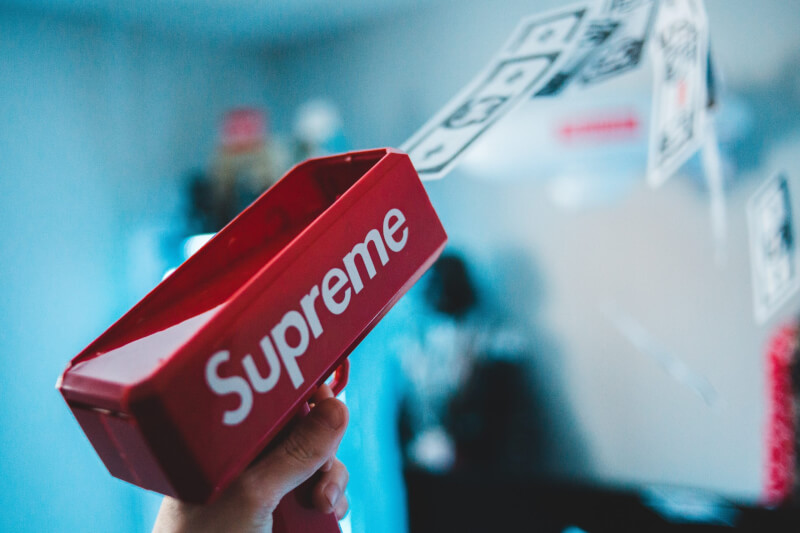Technological innovation and digitization have transformed the way we live, think, and even work. Now that products and services are virtually accessible from every corner of the world, people are also changing the way they set up and run their businesses.
Customers are no longer required to visit the physical stores, check the quality, negotiate price, and buy things.
Everything is available online. All they need to do is visit a website, browse through different options, clear their doubts by having a chat with a support team, make a virtual payment, and receive products at their doorstep. Sounds amazing, right?
But, starting an online business isn’t a walk in the park. There are so many technical elements involved that even experienced brick-and-mortar sellers find it difficult to sell their goods online.
It can become even more challenging if you want to start an e-commerce business from scratch and that too with limited finances. It requires a thorough understanding of order fulfillment, marketing, and delivery processes.
That’s where a dropshipping business model comes to your rescue.
What is Dropshipping and How Does it Work?

Simply put, dropshipping is an order fulfillment method that doesn’t need a business to keep inventory in stock.
The main idea is that you receive an order and pass it on to your vendor, who then delivers the order to the customer. In other words, you sell other people’s products and earn from the transaction without even needing to stock anything at your end.
Even shipping and returns are the concern of the supplier. Seems like easy money, isn’t it?
But wait!
Setting up a successful dropshipping business isn’t that easy as it may sound.
There are thousands of dropshipping stores working in the same niche as yours, meaning all of your marketing efforts, SEO strategies, and pricing should be spot on if you want to outperform your competitors and attract sales.
That’s why we will show you exactly how to start your successful dropshipping business so you can start in the right way.
How to Start a Successful Dropshipping Business in Seven Days?

If you have capital and time, you have plenty of other options to choose from. You can create your loaded eCommerce store (without relying on any third-party vendor) using any of the available e-commerce platforms.
The Dropshipping business model is the right choice for you if you’re a solopreneur looking to establish an online business with limited resources and time.
This post will lay out tried-and-tested dropshipping ideas you need to get started. We’ll explain how you can build a successful dropshipping business from scratch in just seven days. Yes, you read that right.
Excited? We’re too… Let’s get started!
Day 1 – Choose Your Niche

So you have finally decided to start your dropshipping store. Great!
Now what?
The first step is to decide the products you’re going to sell in your online store. As tempting as it may be to select products that are trending globally, it’s better to find a niche that is less trendy than the popular ones. Why?
Because major brands with heavy marketing budgets are already dominating the market, making it nearly impossible for newcomers to compete with.
Rather than competing with these big names, choose a niche that has less competition and a dedicated group of customers.
Here, the key is to conduct thorough market research so you can find a niche market for your new online business to grow and succeed.
Finding a Niche Product for Your New Business

Start Brainstorming
As mentioned above, you must choose a niche that other big brands, such as Amazon and Walmart are not much interested in.
Remember, it would be much easier to start an eCommerce business that focuses on a small yet dedicated group of buyers who’re interested in your personalized products than people who love to spend their money on popular online dropshipping platforms.
Start brainstorming and jot down a list of at least 10 niche product ideas you can choose for your dropshipping store.
Conduct Keyword Research
The next step is to test your ideas. For this, you have to conduct keyword research using any of the paid and free tools available online, including Google keyword planner and Ahrefs.
The idea is to determine how many searches any given keyword receives in a month.
Research Social Media Channels
In addition to keyword research, you must also research popular social media channels, such as Reddit, Facebook, and Twitter to gain insights into how your target audience is responding to your chosen niche on social media.
Conduct an Amazon Research
Amazon can also help you identify what specific keywords are searched by the buyers.
If you don’t find a noticeable track record of buyers purchasing your chosen niche products on Amazon, the chances are there isn’t a demand and it’s better to consider any other option.
Pick a Niche For Your Dropshipping Business

Choose a niche and move forward to build a successful dropshipping business for ultimate success.
Do not discard the data you got from your research as you might need to choose a new niche in case the niche you choose originally doesn’t work out.
Day 2 – Search for Suppliers

After choosing your niche, the next step is to find and contact a vendor. Depending upon your niche, you have to find a supplier for your dropshipping store who can deliver products for you.
Leverage Search Operators
Finding good vendors isn’t a piece of cake. Since most of them do not have optimized websites, it is difficult for e-commerce store owners to find them through a Google search.
One of the best ways to find vendors when you are starting your dropshipping business is by using search operators. Simply put, search operators are characters and commands that help searchers refine their search results.
In other words, with search operators, you can achieve what you’re looking for without spending too much of your time.
For instance, ‘keyword+dropshipping’, ‘keyword+suppliers’, and ‘keyword+distributor’ are some of the many examples of search operators.
Try Keyword Variations and Mix them Up
Use both search operators and keyword variations to find the right combination of operators+keywords you can use to find suppliers in your relevant niche.
Once you have both search operators and keywords in hand, you can mix them up using the keyword mixer tool.
Create a Google Sheet
Copy/paste results in a Google sheet to track keyword+operator variations you have searched on search engines.
Also, add ‘suppliers’, ‘URL’, ‘contact details’, ‘contacted’, and ‘applied’ columns to stay organized and maintain a proper record of all the suppliers you have searched for on Google.
Search for Suppliers and Analyze Your Results
Conduct an actual search by using operator keyword variations by entering these values in the search box. Complete the excel sheet and fill in all the columns so you don’t lose any of your precious findings.
Reach Out to Your Chosen Supplier
After creating a list, the next step is to dig deeper into the supplier’s websites. Carefully examine their pages and also get in touch with their support team to clear your doubts.
Choose 3 top suppliers and reach out to them to enquire more about the services they can offer.
You can either use pre-built email templates for that or can also write an email from scratch. Based on your email conversation, you can choose a supplier that best fits your needs.
Open an Account with Your Vendor
Some suppliers allow businesses to open an account with them directly through their website. Go through requirements and open a dropshipping account with your chosen vendor.
At this stage, you may have to provide your Sales Tax ID and business name to get started. Talk to your lawyer and seek legal advice before you proceed further.
Day 3 – Establish Your Brand

Once you have all the legal elements in place, it’s time to create your brand now. Branding impacts the overall sales and growth of your newly-established dropshipping business.
If you think of MAC and you get a feeling of sophistication, style, and beauty, it’s because the brand has successfully managed to position itself as the top beauty and cosmetics brand.
Branding is all about differentiation that sets your business apart from the rest of the competition.
From curating your brand store to deciding your business logo and brand colors, you have to decide everything at this point before you proceed further.
Day 4 – Set up Your Dropshipping Store

So you know what you’re selling and who your supplier is. You’ve also decided on your business name, logo, and tagline.
What’s next?
Set up your store. No matter how much you try to make your store look perfect, there’s always something else to do.
So, instead of achieving perfection, keep your focus on creating a store that is responsive, navigable, attractive, and easy to handle.
Select Your Platform
There are many e-commerce platforms, including eBay, BigCommerce, Shopify, WordPress, and Weebly that you can use to create your store online. Choose a platform that you believe is more accessible and easy to use.
Choose a Theme
All e-commerce platforms come with themes that you can choose to personalize your e-commerce store.
Always make sure you select a theme that is mobile-friendly and fast. Do your research and choose a theme that can help you offer the best user experience.
Set up Your Store
After installing a theme, you can customize it according to your needs. From colors to menus and borders to images, make sure each and everything on your store is in line with your branding and business niche.
Day 5 – Define the Drophipping Products and Create Relevant Pages

Now that your dropshipping store is ready, you can add products to set up your dropshipping store.
Define Dropshipping Products
Rule # 1: Do not try to sell every product you have in your inventory. Define fewer products that are the most relevant.
Rule # 2: Choose a product that caters to your target audience’s needs.
Rule # 3: Pick products that are profitable and involve a good profit margin.
Rule # 4: Choose products that are not too expensive
Define Pricing
Rule # 1 – Keep MSRP in mind. MSRP is the price suggestion you get from your supplier.
Rule # 2 – Keep MAP in mind. MAP is the lowest price you can sell your products on.
Rule # 3 – Keep your profit margin in mind.
Rule # 4 – Keep your competitor’s price in mind. Remember, if two stores are selling the same product, the one with better pricing will win the race.
Create Product Pages

The product pages on your store should be compelling enough to attract potential customers.
The biggest mistake dropshipping store owners make is they copy/paste descriptions they get from their vendors.
Make sure you invest time in creating product descriptions that can reflect the unique character of your business.
Embed product images and videos to help your buyers know the true benefits of your products.
And last but not least, don’t forget to highlight your returns and refunds policy.
In addition to product pages, you must also create an About Us section for your store. Your Store FAQ, Contact Us page, Privacy policy, and shipping pages are also important for the success of your dropshipping store.
Day 6 – Finalize and Launch Your Ecommerce Store

Congratulations! You’ve done a pretty good job so far.
It’s time to officially launch your dropshipping business and start your journey as a successful online entrepreneur.
Make this day special and announce deals and discounts to your potential customers.
At this point, you must also set up social media pages for your business. Install apps and plugins you might need to successfully run your e-business.
Also, install Google Analytics so that you can keep an eye on your store’s progress.
Day 7 – Promote Your Business

While building your dropshipping business needs 6-days of effort only, it can take ages to achieve real-time success and business growth.
Be patient. Learn from your competitors and those who already are doing good in your industry.
Also, benefit from the best SEO, paid ads, and content marketing strategies to help your e-commerce business get noticeable success and exposure.
By now, you are ready to go and start your own successful dropshipping business in 14 days only. What are you waiting for? See you on the other side.
























